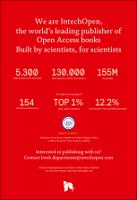Chapter Remote Sensing for Non‐Technical Survey
| dc.contributor.author | Lacroix, Vinciane | |
| dc.contributor.author | Shimoni, Michal | |
| dc.contributor.author | Beumier, Charles | |
| dc.contributor.author | Borghys, D. | |
| dc.contributor.author | Milisavljevic, Nada | |
| dc.contributor.author | Yvinec, Yann | |
| dc.date.accessioned | 2021-06-02T10:09:05Z | |
| dc.date.available | 2021-06-02T10:09:05Z | |
| dc.date.issued | 2017 | |
| dc.identifier | ONIX_20210602_10.5772/66691_307 | |
| dc.identifier.uri | https://library.oapen.org/handle/20.500.12657/49193 | |
| dc.description.abstract | Ergonomic Design Thinking (EDT) is a project management methodology that takes advantage of two important concepts or themes in carrying out project actions. The first is Design Thinking itself, a project management approach originally proposed by Tim Brown, who knew beforehand the full potential of design tools, techniques and maybe we should add idiosyncrasies. Designers have “their own way” of following through and carrying out issues such as deadlines and sequences, for example. This logic is similar to another important theme: ergonomics. The main objective of ergonomics is adapting work systems to workers themselves. By doing so, its professionals dig deep into the social technical fabric of a workplace and use recurrent and iterative strategies in order to search for a perfect fit for a given workstation. EDT as a modeling guide for workspace projects have been used in Brazil for quite some time. This text outlines an interesting experience in which EDT was used as a conception tool in building a new health safety and environmental (HSE) management system model for construction sites. A real case–an ongoing construction work–was used to contextualize the experiment and better define the various instruments of this HSE model. Due to the work environment and predominant job characteristics available, the EDT approach did quite well in terms of serving its project management purpose, as it was confirmed when the new system became fully functional. | |
| dc.language | English | |
| dc.subject.classification | bic Book Industry Communication::K Economics, finance, business & management::KN Industry & industrial studies::KNX Industrial relations, health & safety::KNXC Health & safety issues | |
| dc.subject.other | ergonomics, health, safety and environmental, management systems | |
| dc.title | Chapter Remote Sensing for Non‐Technical Survey | |
| dc.type | chapter | |
| oapen.identifier.doi | 10.5772/66691 | |
| oapen.relation.isPublishedBy | 09f6769d-48ed-467d-b150-4cf2680656a1 | |
| oapen.relation.isFundedBy | FP7-SEC-2011-1 | |
| oapen.grant.number | 284747 | |
| oapen.grant.acronym | TIRAMISU |

